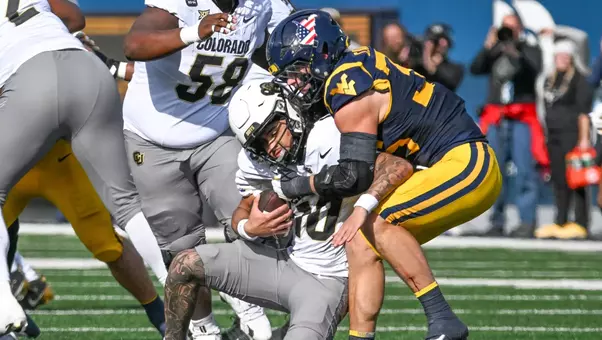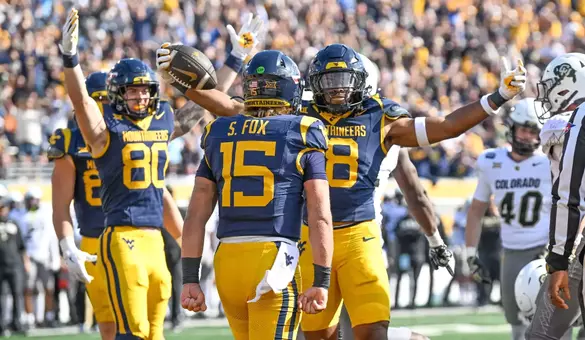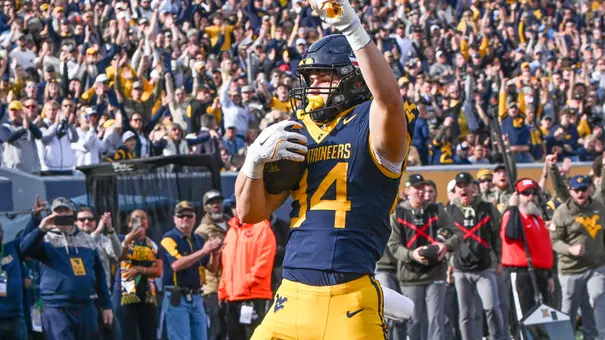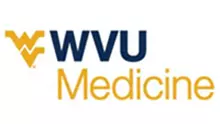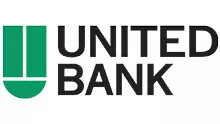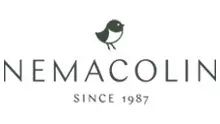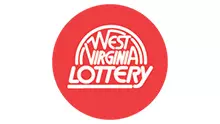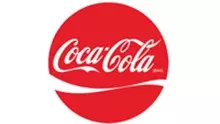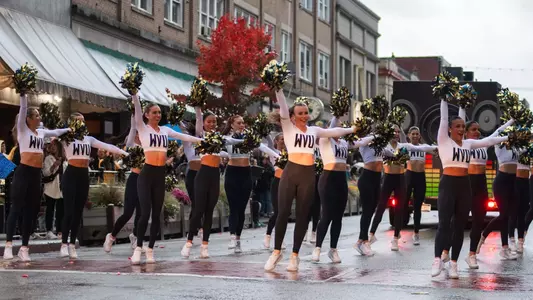
Photo by: WVU Photo/Alyssa Reeves
WVU’s Long Homecoming History
October 15, 2024 10:08 AM | Football
MORGANTOWN, W.Va. – Years ago, when my father was still living, he once gave me some great advice.
"John," my dad said, "if you can't fix something with a hammer or a screwdriver, then you should probably just let someone else do it!" His point being, people who get a reputation for being able to fix things wind up doing nothing but fixing things!
This week, I am somewhat reminded of my father's wisdom.
Since I'm getting a reputation around here for being the person who knows Mountaineer-sports-related stuff, Kevin Berry, WVU's outstanding vice president of alumni relations, emailed me a couple of weeks ago to ask me if I would be willing to do an informational webinar with his alumni group this Wednesday after work on WVU's homecoming history.
"Sure," I told him.
Through the years, the alumni office has always been great to athletics, going back to the days of the late Dick Polen and Steve Douglas - two of the best storytellers ever. If there was a group of Mountaineer alums laughing it up and having a great time, you can bet Steve Douglas was right in the middle of it!
Nevertheless, Kevin mentioned some things that I had written about homecoming several years ago, and not remembering any of it, I had to pull a Curt Cignetti and Google myself. Lo and behold, as Kevin indicated, I had written a couple of stories about WVU's homecoming history on our website, WVUsports.com, the most recent posting on Oct. 10, 2017.
So, at the risk of repeating myself, I will take another swing at this.
The first homecoming football game at West Virginia University was played on Thanksgiving Day, Nov. 24, 1921, against Washington & Jefferson. It says so on page 174 of the Mountaineer football media guide.
That was roughly 10 years after the University of Missouri was credited for inventing the tradition in 1911. According to an article titled The History of Homecoming, authored by Eliza Brooke, Missouri director of athletics Chester L. Brewer invited alums to come back to campus for the Tigers' game against rival Kansas. As an enticement to get people to return, a spirit rally and parade were added.
After all, who doesn't like parades, right Matt Wells?
Brewer's idea ended up attracting a crowd of more than 9,000, and soon other schools across the country took up his idea, among them Baylor and Illinois, which also have made claims through the years to having founded the tradition.
West Virginia's first homecoming parade was actually held in 1920, a year before the first homecoming game, and was considered a success despite a downpour of rain.
The first homecoming football game was played against WVU's biggest rival at the time, Washington & Jefferson, not Pitt. If you look up the words to the fight song "Hail, West Virginia!" you will notice these lyrics:
Let's give a rah for West Virginia
And let us pledge to her anew.
Others may like Black and Crimson,
But for us it's Gold and Blue
Black and Crimson is a reference to Washington & Jefferson's school colors and what made the Presidents such an appealing homecoming foe for West Virginia was the fact that they were willing to come to Morgantown to play on a frequent basis, whereas Pitt wasn't.
Dubbed "the greatest home-coming in history for University students" in the Monday, Nov. 27, 1921 edition of the The Fairmont West Virginian, the Turkey Day event was actually a two-day extravaganza.
Activities began with a Wednesday morning parade down High Street that included most of the WVU student organizations and featuring "classical" and "burlesque" floats, which sounds rather interesting.
After all, who doesn't like burlesque shows?
Business buildings, college boarding houses, fraternities and sororities were extensively decorated with prizes being awarded to the best ones. Following the parade, alums conducted official University business, including taking up such things as electing a full-time alumni secretary, adopting a new constitution and picking officers. A dinner was served at the downtown Baptist church and afterward, a ballroom dance concluded the evening.
These planned activities became such a big deal that local churches agreed to hold their annual Thanksgiving Day services on Wednesday night to avoid interrupting the big football game played on Thursday afternoon.
In between a noon banquet and a 5 p.m. dinner for the old grads to meet the young lads, the Mountaineer football team was blanked 13-0 by coach Earle "Greasy" Neale's undefeated W&J football team that wound up tying Cal in the 1922 Rose Bowl in Pasadena, California.
At halftime a pageant representing the smoking of the peace pipe by Washington & Jefferston and West Virginia was presented followed by the annual initiation of the Fi Batar Kappar.
Among notables returning to campus that week were U.S. Senator Matthew M. Neely, Daniel Willard, president of B&O Railroad, local newspaper magnate H.C. Ogden and famed Michigan football coach Fielding Yost, who gave West Virginia's Clarence Spears several pointers on ways he could improve his Mountaineer football squad.
Spears took Yost's constructive criticism as you would expect he would, and the two became instant enemies that only grew in intensity in the late 1920s when Spears coached Minnesota in the Big Ten. As the late WVU director of athletics Harry Stansbury once said of Spears and Yost, "they hated each other cordially."
The WVU homecoming game was once again played against W&J on Thanksgiving Day in 1922, a 14-0 West Virginia victory, with Yost no longer on the alumni guest list.
Homecoming games took a pause until 1930, when the Mountaineers lost 7-6 to the Presidents, continued in 1931 for a matchup against Penn State and once more versus W&J in 1933.
However, The Great Depression made it difficult for such extravagances as homecomings, particularly for cash-strapped WVU, but the event returned in 1935 and continued uninterrupted until COVID-19 closed college campuses nationwide in 2020.
One year, the entire cadet corps marched in the parade down High Street and presented Gov. W.G. Conley with a 19-gun salute. On another occasion, more than 1,000 high school football players throughout the state served as Homecoming guests in a ploy to help the struggling WVU football team. But considering how bad the Mountaineers were at the time, not nearly enough of them ended up choosing to play here.
In 1939, taking its cue from LSU, the campus magazine Moonshine sponsored a poll to determine the homecoming queen and students voted Wheeling's Mary Lou Bullard WVU's first-ever queen.
By the 1950s, homecoming was considered among the most eagerly anticipated activities of the fall semester on campus.
This year, WVU will play its 94th homecoming football game Saturday night against 17th-ranked Kansas State inside Milan Puskar Stadium – the 18th time the Mountaineers will be playing a nationally ranked opponent on homecoming.
And the most frequently played homecoming foe?
That would be Syracuse, the Orange helping West Virginia celebrate nine homecomings in all since 1946. Four times Syracuse rained on WVU's homecoming parade, including a downpour in 1960 when the No. 3-ranked Orange rolled to a 45-0 victory.
Among recent notable homecoming victories for West Virginia was a 21-20, come-from-behind triumph against fourth-ranked Boston College in 1984 - one of seven consecutive homecoming wins for the Mountaineers from 1979 to 1985.
The longest streak of homecoming victories was from 2001, when West Virginia defeated Rutgers 80-7 (that's right 80 to 7!), through 2009 when Noel Devine's late touchdown averted disaster in a 28-24 come-from-behind win against Connecticut.
Two of the most unforgettable homecoming victories were against Louisville in 2005, a triple-overtime 46-44 thriller, and against Baylor in 2012, a 70-63 Mountaineer triumph in what was also the first Big 12 home game in school history.
Former coaches Rich Rodriguez and Greasy Neale are the only undefeated homecoming coaches in Mountaineer annals, Rich Rod winning all seven of his homecoming matchups and Greasy capturing the two homecoming games he coached here in 1931 and 1933.
Hall of Famer Don Nehlen has won the most homecoming games of any West Virginia coach – 14 from 1980 until his retirement following the 2000 season.
Overall, West Virginia has won 53, lost 37 and tied three of its homecoming games. The three ties occurred in 1958 against Penn State (14-14,) in 1966 against Kentucky (14-14) and in 1992 against Boston College (24-24).
As for this year's homecoming parade, it is scheduled to begin at 6 p.m. on Friday night at the top of High Street. We hope to see you there!
After all, who doesn't like parades?
"John," my dad said, "if you can't fix something with a hammer or a screwdriver, then you should probably just let someone else do it!" His point being, people who get a reputation for being able to fix things wind up doing nothing but fixing things!
This week, I am somewhat reminded of my father's wisdom.
Since I'm getting a reputation around here for being the person who knows Mountaineer-sports-related stuff, Kevin Berry, WVU's outstanding vice president of alumni relations, emailed me a couple of weeks ago to ask me if I would be willing to do an informational webinar with his alumni group this Wednesday after work on WVU's homecoming history.
"Sure," I told him.
Through the years, the alumni office has always been great to athletics, going back to the days of the late Dick Polen and Steve Douglas - two of the best storytellers ever. If there was a group of Mountaineer alums laughing it up and having a great time, you can bet Steve Douglas was right in the middle of it!
Nevertheless, Kevin mentioned some things that I had written about homecoming several years ago, and not remembering any of it, I had to pull a Curt Cignetti and Google myself. Lo and behold, as Kevin indicated, I had written a couple of stories about WVU's homecoming history on our website, WVUsports.com, the most recent posting on Oct. 10, 2017.
So, at the risk of repeating myself, I will take another swing at this.
The first homecoming football game at West Virginia University was played on Thanksgiving Day, Nov. 24, 1921, against Washington & Jefferson. It says so on page 174 of the Mountaineer football media guide.
That was roughly 10 years after the University of Missouri was credited for inventing the tradition in 1911. According to an article titled The History of Homecoming, authored by Eliza Brooke, Missouri director of athletics Chester L. Brewer invited alums to come back to campus for the Tigers' game against rival Kansas. As an enticement to get people to return, a spirit rally and parade were added.
After all, who doesn't like parades, right Matt Wells?
Brewer's idea ended up attracting a crowd of more than 9,000, and soon other schools across the country took up his idea, among them Baylor and Illinois, which also have made claims through the years to having founded the tradition.
West Virginia's first homecoming parade was actually held in 1920, a year before the first homecoming game, and was considered a success despite a downpour of rain.
The first homecoming football game was played against WVU's biggest rival at the time, Washington & Jefferson, not Pitt. If you look up the words to the fight song "Hail, West Virginia!" you will notice these lyrics:
Let's give a rah for West Virginia
And let us pledge to her anew.
Others may like Black and Crimson,
But for us it's Gold and Blue
Black and Crimson is a reference to Washington & Jefferson's school colors and what made the Presidents such an appealing homecoming foe for West Virginia was the fact that they were willing to come to Morgantown to play on a frequent basis, whereas Pitt wasn't.
Dubbed "the greatest home-coming in history for University students" in the Monday, Nov. 27, 1921 edition of the The Fairmont West Virginian, the Turkey Day event was actually a two-day extravaganza.
Activities began with a Wednesday morning parade down High Street that included most of the WVU student organizations and featuring "classical" and "burlesque" floats, which sounds rather interesting.
After all, who doesn't like burlesque shows?
Business buildings, college boarding houses, fraternities and sororities were extensively decorated with prizes being awarded to the best ones. Following the parade, alums conducted official University business, including taking up such things as electing a full-time alumni secretary, adopting a new constitution and picking officers. A dinner was served at the downtown Baptist church and afterward, a ballroom dance concluded the evening.
These planned activities became such a big deal that local churches agreed to hold their annual Thanksgiving Day services on Wednesday night to avoid interrupting the big football game played on Thursday afternoon.
In between a noon banquet and a 5 p.m. dinner for the old grads to meet the young lads, the Mountaineer football team was blanked 13-0 by coach Earle "Greasy" Neale's undefeated W&J football team that wound up tying Cal in the 1922 Rose Bowl in Pasadena, California.
At halftime a pageant representing the smoking of the peace pipe by Washington & Jefferston and West Virginia was presented followed by the annual initiation of the Fi Batar Kappar.
Among notables returning to campus that week were U.S. Senator Matthew M. Neely, Daniel Willard, president of B&O Railroad, local newspaper magnate H.C. Ogden and famed Michigan football coach Fielding Yost, who gave West Virginia's Clarence Spears several pointers on ways he could improve his Mountaineer football squad.
Spears took Yost's constructive criticism as you would expect he would, and the two became instant enemies that only grew in intensity in the late 1920s when Spears coached Minnesota in the Big Ten. As the late WVU director of athletics Harry Stansbury once said of Spears and Yost, "they hated each other cordially."
The WVU homecoming game was once again played against W&J on Thanksgiving Day in 1922, a 14-0 West Virginia victory, with Yost no longer on the alumni guest list.
Homecoming games took a pause until 1930, when the Mountaineers lost 7-6 to the Presidents, continued in 1931 for a matchup against Penn State and once more versus W&J in 1933.
However, The Great Depression made it difficult for such extravagances as homecomings, particularly for cash-strapped WVU, but the event returned in 1935 and continued uninterrupted until COVID-19 closed college campuses nationwide in 2020.
One year, the entire cadet corps marched in the parade down High Street and presented Gov. W.G. Conley with a 19-gun salute. On another occasion, more than 1,000 high school football players throughout the state served as Homecoming guests in a ploy to help the struggling WVU football team. But considering how bad the Mountaineers were at the time, not nearly enough of them ended up choosing to play here.
In 1939, taking its cue from LSU, the campus magazine Moonshine sponsored a poll to determine the homecoming queen and students voted Wheeling's Mary Lou Bullard WVU's first-ever queen.
By the 1950s, homecoming was considered among the most eagerly anticipated activities of the fall semester on campus.
This year, WVU will play its 94th homecoming football game Saturday night against 17th-ranked Kansas State inside Milan Puskar Stadium – the 18th time the Mountaineers will be playing a nationally ranked opponent on homecoming.
And the most frequently played homecoming foe?
That would be Syracuse, the Orange helping West Virginia celebrate nine homecomings in all since 1946. Four times Syracuse rained on WVU's homecoming parade, including a downpour in 1960 when the No. 3-ranked Orange rolled to a 45-0 victory.
Among recent notable homecoming victories for West Virginia was a 21-20, come-from-behind triumph against fourth-ranked Boston College in 1984 - one of seven consecutive homecoming wins for the Mountaineers from 1979 to 1985.
The longest streak of homecoming victories was from 2001, when West Virginia defeated Rutgers 80-7 (that's right 80 to 7!), through 2009 when Noel Devine's late touchdown averted disaster in a 28-24 come-from-behind win against Connecticut.
Two of the most unforgettable homecoming victories were against Louisville in 2005, a triple-overtime 46-44 thriller, and against Baylor in 2012, a 70-63 Mountaineer triumph in what was also the first Big 12 home game in school history.
Former coaches Rich Rodriguez and Greasy Neale are the only undefeated homecoming coaches in Mountaineer annals, Rich Rod winning all seven of his homecoming matchups and Greasy capturing the two homecoming games he coached here in 1931 and 1933.
Hall of Famer Don Nehlen has won the most homecoming games of any West Virginia coach – 14 from 1980 until his retirement following the 2000 season.
Overall, West Virginia has won 53, lost 37 and tied three of its homecoming games. The three ties occurred in 1958 against Penn State (14-14,) in 1966 against Kentucky (14-14) and in 1992 against Boston College (24-24).
As for this year's homecoming parade, it is scheduled to begin at 6 p.m. on Friday night at the top of High Street. We hope to see you there!
After all, who doesn't like parades?
Arizona State Game Uniform Reveal
Friday, November 14
Arizona State Uniform Reveal
Thursday, November 13
United Bank Playbook: Arizona State Preview
Wednesday, November 12
Brandon Siders | Nov. 11
Tuesday, November 11
